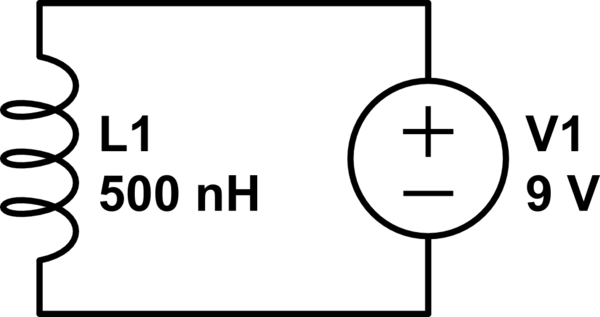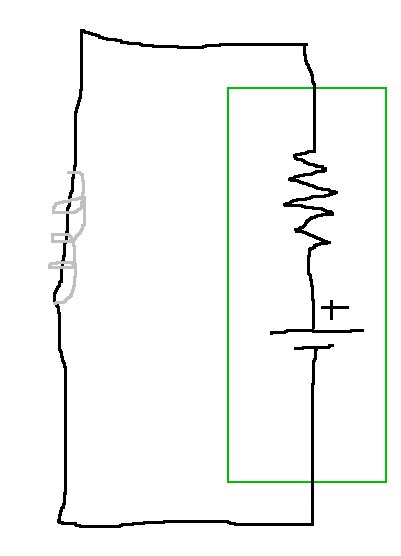The equation of an (ideal) inductor is.
$$V=L\frac{dI}{dt}$$
So lets say at t=0 we connect an ideal 500nH inductor to an ideal 9V source.
$$9=500*10^{-9}\frac{dI}{dt}$$
$$9=0.5*10^{-6}\frac{dI}{dt}$$
$$\frac{dI}{dt}=18*10^6$$
$$I = \int18*10^6dt = 18*10^6t+c$$
At \$t = 0\$, \$c=0\$ therefore
$$I = \int18*10^6dt = 18*10^6t$$
So one second after connecting the inductor to the battery you should have a current of 18MA. (no that capital M is not a typo)
Back in the real world you don't have an ideal 9V source and you don't have an ideal inductor and for that matter you don't have ideal wires to connect the inductor to the voltage source.
In reality very soon after you connect the inductor to the battery the behaviour will be dominated not by the inductance but by the resistance of the coil and the battery. The coil likely has a much lower resistance than the battery leading to very small voltages being measured.


